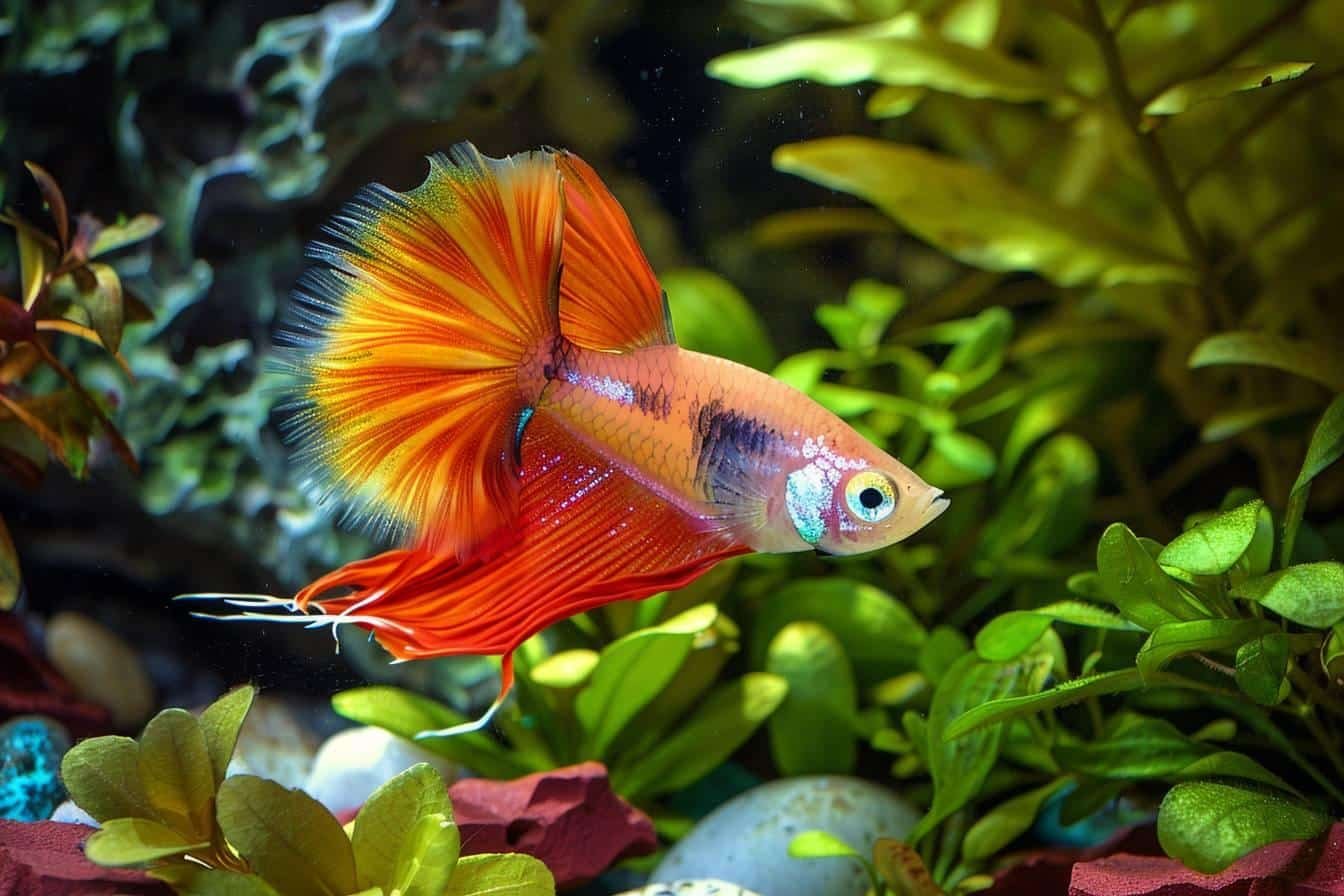The article in brief
Le Poecilia reticulataThe guppy is a small, colourful fish from South America that is popular with aquarists. Here are the key points:
- Origin and size Fresh waters of South America, 2.5 to 6 cm
- Features Marked sexual dimorphism, coloured males, larger females
- Maintenance : Easy, ideal for beginners, pH 6-8, 20-28°C
- Reproduction Ovoviviparous, 5 to 50 fry after 3-5 weeks of gestation
- Applications : Mosquito control, a biological model for research
Ah, the Poecilia reticulataWhat an exciting little fish! I still remember the first time I saw one swimming in an aquarium. It was as if a handful of rainbows had escaped to dance underwater. Let me tell you everything I know about this aquatic jewel, commonly known as the guppy.
Origins and characteristics of poecilia reticulata
Le Poecilia reticulata is native to the fresh waters of South America. It is found mainly in Venezuela, Trinidad and Tobago, Brazil and the Guianas. It is a small fish, measuring between 2.5 and 6 cm, with an amusing peculiarity: the females are larger than the males.
What makes the guppy so popular is its marked sexual dimorphism. Males are brightly coloured and have large fins, while females are more discreet. It's almost as if Mother Nature has decided to turn males into models and females into businesswomen!
Here is a table summarising the main characteristics of Poecilia reticulata :
| Features | Description |
|---|---|
| Size | 2.5 to 6 cm |
| Sexual dimorphism | Very marked |
| Life expectancy | 1.5 to 2 years |
| Reproduction | Ovoviviparous |
| Diet | Omnivore |
A multi-faceted fish
The Poecilia reticulata is much more than just an aquarium fish. Did you know that it is also used to combat mosquitoes in certain regions? It's a real little ecological hero! What's more, scientists use it as a biological model in their research. Not bad for such a little fish, is it?
An interesting reproduction
Guppy reproduction is a spectacle in itself. These fish are ovoviviparous, which means that the eggs hatch inside the female's body. After a gestation period of 3 to 5 weeks, she gives birth to 5 to 50 fry. I've always found it fascinating to see these tiny carbon copies of their parents swimming from birth!
Maintaining poecilia reticulata in an aquarium
As a pet shop floor manager, I can assure you that Poecilia reticulata is an excellent choice for aquarium beginners. It's relatively easy to maintain, making it an ideal companion for those who want to get started in this exciting activity.
Ideal living conditions
Here are the ideal conditions for your guppies to flourish:
- Water pH: between 6 and 8
- Hardness: 3 to 30 GH
- Temperature: 20 to 28°C
- Minimum recommended volume: 50 to 60 litres
Don't forget that these little fish are gregarious. They like to live in groups, so keep several of them in your aquarium. It's a real pleasure to see them swimming together, forming a colourful aquatic ballet!
Food and behaviour
Poecilia reticulata is omnivorous. In the wild, it feeds on plankton, small insects and plants. In the aquarium, you can offer them a varied diet including flakes, pellets and even frozen food. I particularly like to give them daphnia from time to time, it's a real feast for them!
In terms of behaviour, the guppy is a peaceful fish. It generally gets on well with other non-aggressive species. However, beware of possible hybridisation with other Poecilia such as mollys or Endler guppies. If you want to preserve the purity of your line, it's best to keep them separate.

The challenges and joys of breeding poecilia reticulata
Breeding Poecilia reticulata is an exciting adventure, but it also has its challenges. As a keen breeder, I've had my share of successes and failures, and I'm delighted to share my experience with you.
Variety selection
One of the most exciting things about breeding guppies is the multitude of varieties available. Breeders have created countless fin shapes and colours. It's a real underwater rainbow! Personally, I'm partial to the 'sail-tail' varieties, with their majestic tail fins that undulate in the water.
Health challenges
Unfortunately, Poecilia reticulata can be susceptible to certain diseases. One of the most dreaded is Tetrahymena, nicknamed the 'guppy killer'. I lost a whole group of guppies to this disease a few years ago. Since then, I've been particularly vigilant about aquarium hygiene and quarantining new arrivals.
Despite these challenges, breeding Poecilia reticulata remains an enriching experience. Watching new generations being born, and observing the evolution of colours and shapes as they are crossed, is a daily source of wonder.
In the final analysis, the Poecilia reticulata is much more than just an aquarium fish. It's an interesting little creature, with its own history and special characteristics. Whether you're a beginner or a seasoned aquarist, I encourage you to embark on your guppy adventure. You won't be disappointed!
To find out more about fish farming, I recommend that you consult these resources:
